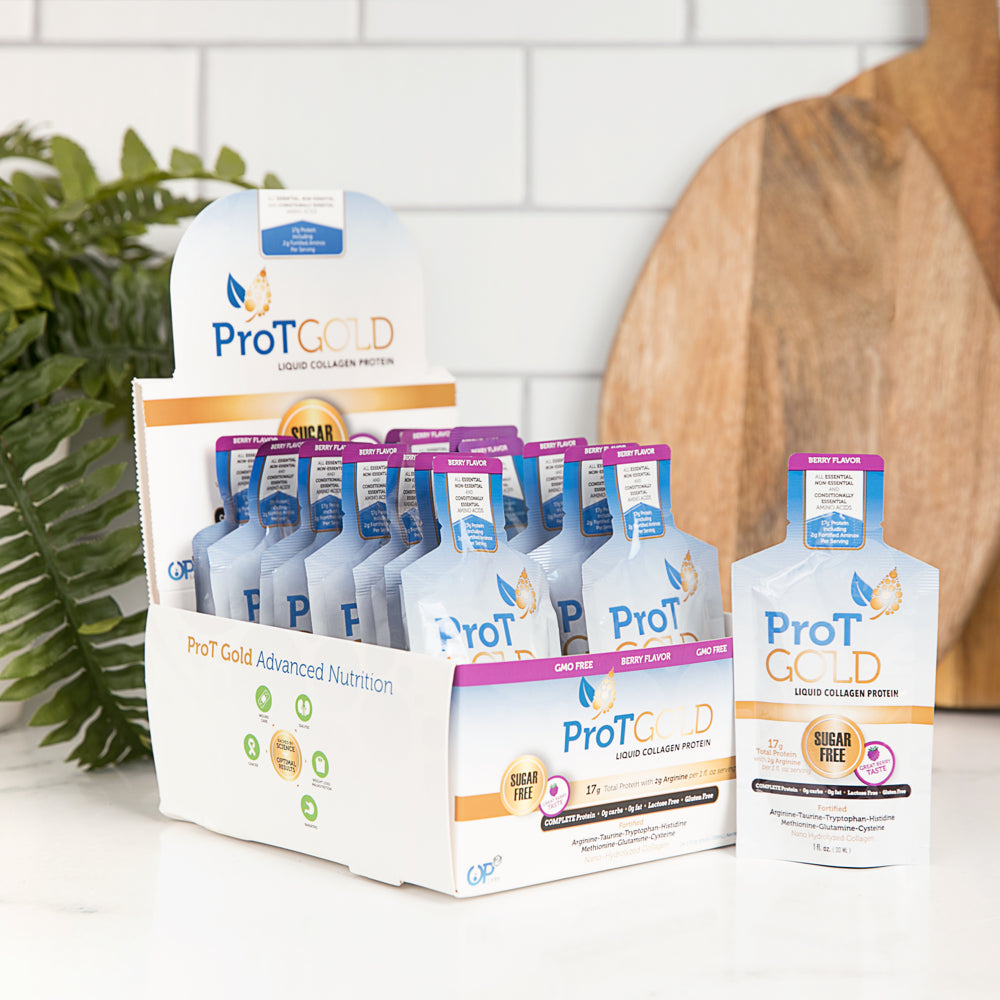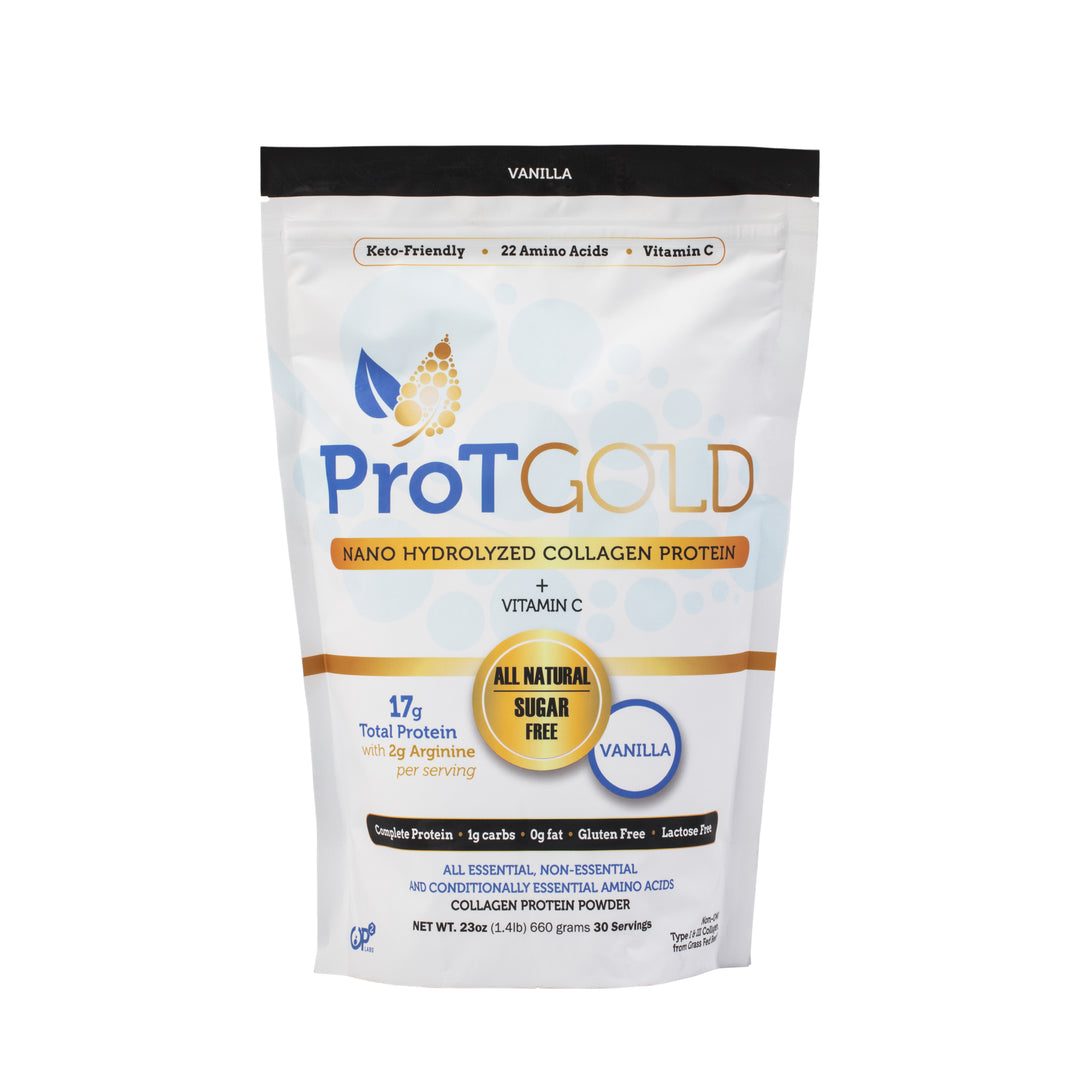Why Is My Wound Not Healing?: 10 Reasons & How To Treat Them
Sometimes, time does NOT heal all wounds - and you need to know what to do if you are stuck with a wound not healing. If you have a wound that’s been giving you grief for weeks, and you’re wondering: “Why is my wound not healing!?”, it's time to try some wound healing solutions.
Whether it’s a nutritional deficiency, an underlying condition, or just plain old stress, there are many slow wound healing causes. In this article, we’ll teach you the signs of a wound not healing, some potential causes, and what to do about them.
Before we get into what to do if you have a wound not healing, let’s take a look at what the natural healing process should look like.
What does healthy wound healing look like?
There are four stages of wound healing, and each stage creates the conditions for the next stage to begin. If the body is unable to complete one stage of wound healing, this could create a situation of a wound not healing.
The wound healing stages are:
Hemostasis
Hemostasis is your body’s rapid response to the appearance of a wound. Blood needs to coagulate to slow and stop bleeding, and this process begins with a deposit of fibrin to form a scab.
What you should see during hemostasis
A bleeding wound should start to clot and dry within just a few minutes of its occurrence. The wound won’t heal while you are bleeding, and if scabbing does not show then that’s cause for concern.
Inflammation
Inflammation establishes an immune barrier against invading microorganisms. The immune system sends in neutrophils to destroy bacteria and damaged tissue around the wound site. This is vital to wound healing, as acute wounds that have a bacterial imbalance will not heal.
Next, macrophages are deployed to break down devitalized collagen and keep the wound site decontaminated while the new tissue growth begins to take place.
What you should see during inflammation
Redness and swelling, although sometimes uncomfortable, are clear signs that your immune system is attempting to decontaminate the wound site. You may also notice some drainage from the wound as part of the clearing process. This should only last for 2 to 5 days.
Proliferation
Proliferation is where collagen fibers are quickly laid down to fill in the wound site. Collagen is an important component in all types of wound healing. Synthesized by fibroblasts, collagen fibers grant integrity and strength to all tissues.
What you should see during proliferation
The proliferation process normally starts three days after a wound is detected. The wound should gradually decrease in size as the collagenous tissue is formed over the wound.
The wound granulation tissue that is created during the proliferation stage is thicker, rougher, and more disorganized than normal tissue. Because of this, once the wound is filled in, it’s time to move onto the final stage of wound healing: remodeling.
Remodeling
In the remodeling stage, your body reorganizes and aligns collagen fibers to make them smoother and stronger. Although wounds will not regain 100% of their pre-injury integrity, a remodeled wound with appropriate scarring is a sign that you’re healed and healthy.
What you should see during remodeling
While it can take up to two years for a scar to fully remodel, the whole wound healing process should not take longer than 4 to 6 weeks. If you have an open or inflamed wound for longer than that, that is a sure sign of a wound not healing.
Now that you have an idea of what the wound healing process should look like, let’s examine some potential issues that could be throwing a wrench in your healing process.
Why is my wound not healing?: 10 possible causes
Remember, your doctor is your go-to point of call for questions and concerns about your wound, but it’s important for you to understand some possible causes for why you have a wound not healing.
These are possible slow healing wound causes that you can discuss with your doctor:
1. Infection
Avoiding infection is among the biggest and most immediate concerns of any health professional dealing with a wound, whether big or small. When you have a wound not healing, it is often connected to infection and immunological response.
If you have an infected wound, your body will halt the healing process and won’t be able to move on to the proliferation stage. Thus, you end up with a wound not healing.
If you have a fever, swelling, and redness that won’t go away, or are leaking thick, foul-smelling discharge from your wound, there is a good chance that it is infected. Any symptoms of infection, from digestive concerns to nausea, should be reported to your doctor immediately.
Fast action to clear away infection is the best way to get your wound recovery back on track.
2. Necrosis
Necrosis occurs when you don’t get enough blood flow to an area of your body, causing the skin tissue to die out. It can also be caused by an infection with a flesh-eating bacterial strain like Staphylococcus aureus.
The symptoms of necrosis include:
- Intense pain at (and surrounding) the wound site
- Tingling or loss of sensation around the wound
- Skin redness and swelling
- Fluid-filled blisters
- Skin discoloration
- Grayish discharge
If the necrosis is caused by a bacterial infection, your doctor will probably put you on antibiotics to assist with wound healing, but an additional surgical procedure could be required to clear out dead tissue cells if your body isn’t responding to treatment.
3. Continuous inflammation
Some inflammation is good and even necessary during the post surgery recovery process. But sometimes, your body’s healing signals get crossed and you get stuck in a continuous state of inflammation. This could be due to stress, a nutritional imbalance, or an underlying condition.
If your wound is trapped in the inflammation stage, it won’t move on to proliferation and remodeling, leaving you stuck wondering: “Why is my wound not healing?”
Your doctor may prescribe anti-inflammatories or other medications to help you if you have a wound not healing because of inflammation.
4. Varicose veins
To supply the wound with the collagen protein it needs, the site needs to be efficiently connected to the circulatory system.
Veins that are close to the surface of the skin can become unhelpfully twisted or enlarged as collateral damage to an injury. These are called varicose veins.
Altered conditions to these blood vessels may interfere with blood pressure and the movement of nutrients, and may be a reason for your wound not healing as planned.
5. Dryness
Many wounds require a slightly moist environment to heal properly. Studies have shown that moist wounds can heal up to 50% faster than dry ones, so if your wound has been uncovered and is dried out, that may be the reason for your wound not healing.
Wound dressings, proper hydration, and supplements such as liquid collagen are some of the wound care solutions to be aware of.
6. Age
Age plays a factor in wound healing and recovery. At what age does healing slow down? Well, it depends on the person, but in general, our healing ability starts to slow as soon as our mid-20s. (And gets worse from there.)
A principal reason for this is that the human body begins to decrease collagen production as early as in your 20s. Thankfully, collagen can also be refueled in our bodies through diet or supplementation.
7. Pre-existing conditions
Your medical health professional will take into account diabetes or other pre-existing conditions such as anemia when providing you with a timeline for recovery.
Considering that your body pulls on so many resources during recovery, any compromise the body is already making through a deficiency in nutrients or resources can have an effect on the ability to recover from wounds efficiently.
8. Smoking and alcohol
Activities that damage your body, such as smoking or alcohol consumption, put a strain on your body's ability to repair itself quickly and efficiently.
If you are wondering: “Why is my wound not healing?”, it may be worth talking to your doctor about quitting smoking temporarily (or permanently) to assist in wound healing.
9. Mechanical damage
Avoiding strain on the wounded area of your body can be a very tricky consideration to manage.
It goes without saying that the site of your surgical wound has lost the structural integrity that it once had, and until collagen protein is successfully remodeled in the final stage of wound healing, a wound site is simply not ready for any strain from external factors.
What does this mean?
Just as an athlete returning to their sport too early is at much higher risk of reinjuring a wound, so are you at risk when resuming everyday activities after a serious operation. Even gentle stretching in day-to-day activities should be carefully considered.
Confusingly, however, too little movement can also cause problems for some types of wound recovery. A person who is completely immobile is at risk of bedsores and may then need additional pressure ulcer treatment.
10. Improper nutrition
Your body needs a lot more calories than usual while it’s recovering. For example: The demand for collagen, the most abundant protein in the human body, skyrockets as it’s a major structural player not just for the skin, but also for organs, ligaments, and blood vessels.
Slow wound healing after surgery may come down to the body simply having a lack of resources to get on with the work that it needs to do. If you are experiencing a wound not healing after surgery, you may want to talk with your doctor about medical nutrition therapy.
Regardless of any underlying conditions or infections you are dealing with, a wound healing diet can play a beneficial role in how to treat a wound that won’t heal. Of course, this should be undertaken in conjunction with any medications or instructions from your health provider.
Now that you have some ideas of why your wound might not be healing, let’s discuss some solutions that could help you.
What to do if a wound won’t heal
If you are dealing with a wound not healing, then there’s no time to waste! We want to help you get back on your feet as quickly as possible, so it’s time for you to learn what to do if a wound won’t heal.
Here are our top tips for speedy wound healing.
Talk to your doctor
If you are dealing with a wound not healing, the first thing you should do is to call your doctor. Your doctor has a better understanding of your individual medical needs, and can help you with your specific type of wound.
Better yet, make an appointment with your doctor in person so they can see what is going wrong with your wound. It will be much easier for your doctor to treat your wounds that way than by simply contacting them by phone or email to ask, “Why is my wound not healing?”
How to treat a wound that won’t heal is different from case to case, and your doctor will be able to advise you best on what to do if you have a wound not healing.
Make sure the wound is clean
It’s important to keep your wound clean in order to prevent infection from setting in. If you are going to touch your wound, always wash your hands well with soap and water first. You should also try to keep a bandage on open wounds to protect them from bacteria and debris.
You might be wondering: “Can you put alcohol on wounds?”
Most doctors actually recommend that you stay away from rubbing alcohol and hydrogen peroxide when cleaning wounds. That’s because alcohol is too harsh for open skin, and can actually kill off your new skin cells and leave you with your wound not healing.
Instead, you can clean the wound with warm tap water, and apply a mild antibiotic ointment such as Polysporin if needed.
You can double-check with your doctor about what healing ointments are safe for your particular type of wound.
Keep your wound moist
As we mentioned earlier, moist wounds heal up to 50% faster than dry ones. That’s why it’s best to keep your wound covered while you are healing.
If simply covering your wound is not enough, you can ask your doctor about some hydrating wound dressings like collagen dressings or hydrogel dressings to keep your wound moist.
Change your wound dressings frequently
If you are already using wound dressings, that’s fabulous!
But simply keeping your wound covered and leaving it be is also not the way to go.
If you have a wound not healing, the answer could be as simple as knowing when to change your wound dressings. This could be daily, or as directed by your doctor.
Some wound dressings work better at different stages in the healing process (or for different types of wounds), so discuss with your doctor if the type of wound dressing you are using is the most beneficial for your wound healing.
Take a load off
If you are dealing with a wound not healing on your foot, the answer might be a special orthotic shoe or insert. Repeated pressure and rubbing on foot wounds can prolong the healing process by reopening the wound.
Ask your doctor if you can get custom padding or cut-outs for your shoes. There might be a particular type of footwear they would recommend to help speed your wound healing process.
Stay (lightly) active
Just because you want to keep pressure off your wound, it doesn’t mean you shouldn’t move around. In fact, one of the things to do if a wound won’t heal is to keep your body moving.
As long as you aren’t aggravating your wound, regular, gentle exercise can help boost your immune function and improve your circulation, which may help assist in wound healing.
Quit smoking
If you are frustrated with a wound not healing, and you are a regular smoker, then the answer might be to give up smoking! Smoking has been directly linked to slow wound healing, and it could be the culprit.
Talk with your doctor to see if smoking might be the cause of your wound not healing.
Try hyperbaric oxygen therapy
Hyperbaric oxygen therapy (HBOT) may be one of the best things to do if you have a wound not healing properly. HBOT is a proven treatment specifically for diabetic wounds and other chronic wounds. This treatment uses pressurized oxygen to stimulate your body’s own healing process.
HBOT can kickstart tissue repair, even in wounds that have previously failed to heal. Ask your doctor if HBOT might be a good option for you.
Check your blood sugar levels
If you’re struggling with how to treat a wound that won’t heal, it’s possible that you have diabetes. You can develop type 2 diabetes at any point in your life, so it’s worth consulting a doctor and assessing your blood sugar levels.
If you have high blood glucose, it could be the reason for your chronic wounds. Diabetes wound healing is particularly slow, and that’s if your body can complete the healing process at all.
If diabetes is the cause of your wound not healing, you may need special treatment. For example, you might need insulin injections, or a particular diet or exercise plan to control your blood sugar.
It’s important to speak with a doctor before self-diagnosing or significantly altering your diet if you think you might have type 1 or 2 diabetes.
Ask about medical nutrition therapy
Diet isn’t just important for people with diabetes - it’s important for all of us!
Your nutritional intake plays a huge role in wound healing, and if you’re wondering “What can I eat to make my wound heal faster?” it’s worth looking into medical nutrition therapy.
Medical nutrition therapy (MNT) is a customized nutrition plan laid out by a licensed nutritionist or other health professional to assist you in reaching optimal health. MNT is commonly used to assist in swifter wound healing.
Get plenty of healthy vitamins
Not quite ready for full medical nutrition therapy? If your wound isn’t healing properly, there are a few dietary changes you can make from home that could help.
A good place to start is ensuring you have a well-balanced diet with foods that are chock-full of vitamins - in particular, vitamins A and C.
Studies show that vitamin A can help boost new tissue growth. And vitamin C is great for boosting your immune system, and is also one of the necessary vitamins for collagen synthesis.
Eat more protein
Vitamins A and C are great for boosting your body’s natural collagen protein synthesis, but nothing truly beats protein itself. Protein is essential for new tissue creation.
Some good sources of protein include:
- meat and fish
- eggs
- dairy products
- seeds and nuts
- beans and lentils
If you are showing signs of a wound not healing, ensure you’re getting ample protein in your diet. This is one of the easiest, most natural ways to promote a healthy body!
Take a high-quality collagen supplement
If you aren’t getting enough protein through your diet (or if you simply want a faster, easier way to supplement your protein needs), you might like to try liquid protein for healing, such as a collagen supplement.
Since your body uses collagen fibrils to create new tissue during wound healing, taking a collagen supplement may be one of the best things to do if you have a wound not healing.
In fact, many doctors use collagen for wound healing – both as wound dressings and as supplements.
Medical-grade collagen is trusted for use in medical nutrition by nearly 4,000 medical facilities across the United States. If you’re looking to aid your body’s natural healing process, taking a daily collagen supplement may be one of the simplest solutions.









